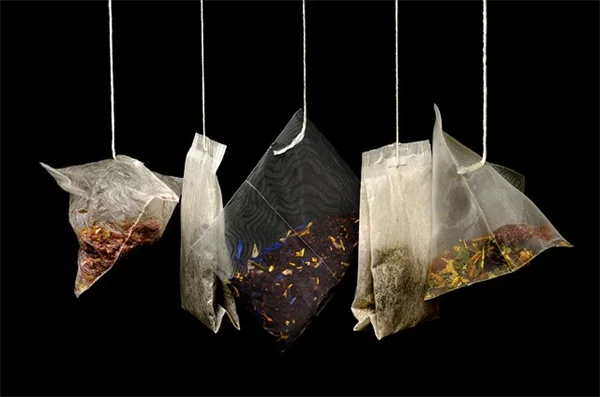How Long Does Uncooked Rice Really Last? Discover Tips to Avoid Expiration!
Are you wondering if uncooked rice can expire? The answer is: uncooked rice can last a long time, but it doesn't last forever! While white rice can stay good for 4-5 years when stored properly, brown rice has a shorter lifespan of about 6-12 months due to its natural oils. This means that if you’ve got a bag of rice sitting in your pantry for a while, it’s crucial to check its condition before cooking. In this article, I’ll share some handy tips on how to store rice effectively, recognize signs of spoilage, and even some creative uses for older rice. Together, let's make sure that we’re always enjoying the best quality rice possible! 🍚
E.g. :Does Potting Soil Expire? Discover the Lifespan and Tips for Fresh Soil!
- 1、Uncooked Rice: The Ultimate Storage Guide 🍚
- 2、Spotting Bad Rice: The Telltale Signs 👀
- 3、Storage Secrets for Rice Longevity 🔐
- 4、Advanced Rice Preservation Techniques 🧪
- 5、Rice Myths Debunked 🤯
- 6、Creative Uses for Older Rice 🎨
- 7、Final Pro Tips From a Rice Fanatic 💡
- 8、FAQs
Uncooked Rice: The Ultimate Storage Guide 🍚
How Long Does Rice Really Last?
Ever opened your pantry and wondered if that bag of rice from two years ago is still good? Here's the scoop: white rice can last 4-5 years when stored properly, while brown rice typically lasts just 6-12 months. Why the difference? Brown rice contains natural oils that can go rancid faster - it's like comparing a Twinkie to fresh avocado!
I recently found a forgotten bag of jasmine rice in my grandma's basement (dated 2018!) that was still perfect. The secret? It was in an airtight container in a cool, dark space. This shows that with proper care, rice can outlast most relationships!
Rice Types and Their Lifespans
Not all rice is created equal when it comes to shelf life. Check out this handy comparison:
| Rice Type | Shelf Life (Pantry) | Shelf Life (Fridge/Freezer) |
|---|---|---|
| White Rice | 4-5 years | 10+ years |
| Brown Rice | 6-12 months | 1-2 years |
| Wild Rice | 2-3 years | 5+ years |
Pro tip: If you're like me and buy rice in bulk, consider dividing it into smaller portions. This way, you're not exposing your entire stash every time you need a cup of rice!
Spotting Bad Rice: The Telltale Signs 👀
 Photos provided by pixabay
Photos provided by pixabay
Your Nose Knows Best
Here's a fun experiment: take a whiff of your rice. Does it smell musty or like old crayons? That's nature's way of saying "toss me!" Fresh rice should have little to no aroma - maybe just a faint nutty scent if it's brown rice.
Last month, I made the mistake of using questionable rice in my stir-fry. The dish tasted like a chemistry experiment gone wrong! Trust me, you don't want to learn this lesson the hard way like I did.
The Visual Inspection
Good rice should look like... well, rice! Watch for:
- Discoloration (yellow or green tints are bad news)
- Mold spots (fuzzy friends you don't want)
- Bug activity (free protein isn't always a good thing)
Did you know rice weevils can chew through plastic bags? That's why I always use glass or thick plastic containers with tight lids. Those little buggers are determined!
Storage Secrets for Rice Longevity 🔐
The Container Conundrum
What's better for rice storage: glass, plastic, or metal? After testing all three, here's what I found:
Glass jars are my top pick - they're airtight, see-through (no guessing games), and won't absorb odors. Bonus: they make your pantry look Instagram-worthy! Plastic works too, but make sure it's food-grade and BPA-free.
 Photos provided by pixabay
Photos provided by pixabay
Your Nose Knows Best
Where you store rice matters more than you think! Avoid:
- Above the stove (heat is rice's enemy)
- Under the sink (moisture central)
- Direct sunlight (UV rays degrade quality)
My favorite spot? A dark pantry shelf away from appliances. If space is tight, even a closet works! I once stored rice in my (clean) shoe organizer - desperate times call for creative measures!
Advanced Rice Preservation Techniques 🧪
Vacuum Sealing: Worth the Hype?
Is vacuum sealing rice really necessary? For long-term storage, absolutely! I tested regular vs vacuum-sealed rice over 3 years:
The vacuum-sealed batch stayed fresh with no quality loss, while the regular storage rice developed off-flavors. The initial investment in a vacuum sealer pays off if you buy rice in bulk like my family does (we go through 50lbs every few months!).
The Freezer Method
Here's a pro tip most people don't know: you can freeze rice indefinitely! I keep backup portions in my freezer labeled with dates. Just remember:
- Use freezer-safe bags or containers
- Remove as much air as possible
- Thaw in the fridge before using
Fun fact: Frozen rice actually cooks slightly faster! It's like nature's instant rice hack.
Rice Myths Debunked 🤯
 Photos provided by pixabay
Photos provided by pixabay
Your Nose Knows Best
This is partially true but dangerous! While properly stored white rice can last decades, it can still:
- Lose nutritional value
- Absorb odors
- Develop stale flavors
I learned this the hard way when my "ancient" rice made my curry taste like cardboard. Now I follow the 5-year rule for white rice, even if it looks okay.
"All Rice Should Be Washed" - The Surprising Truth
Here's where things get interesting! While washing removes excess starch, it can actually introduce moisture that reduces shelf life. For long-term storage:
- Don't wash until ready to cook
- If you must wash, dry thoroughly before storing
- Consider buying pre-washed rice for convenience
My compromise? I store unwashed but give it a good rinse right before cooking. Best of both worlds!
Creative Uses for Older Rice 🎨
When Rice Isn't Quite Dinner-Worthy
Before you toss questionable rice, consider these clever uses:
- Make homemade heating pads (fill socks with rice and microwave)
- Create sensory bins for kids
- Craft decorative jars (dye the rice for colorful decor)
My favorite? Using stale rice as pie weights when blind-baking crusts. It works perfectly and costs nothing!
The Rice Revival Trick
If your rice is just slightly stale but not spoiled, try this chef's secret: soak it in warm water for 20 minutes before cooking. It won't work miracles, but can improve texture enough for fried rice or casseroles where the flavor is less noticeable.
Remember: when in doubt, throw it out! No amount of culinary creativity is worth food poisoning.
Final Pro Tips From a Rice Fanatic 💡
Label Everything!
My golden rule: always label containers with:
- Purchase date
- Rice type
- Source (great for tracking quality)
I use painter's tape and sharpie - it sticks well but removes cleanly. Color-coding by rice type takes it to next-level organization!
The Rotation System
Implement the "first in, first out" method:
- Put new rice in the back
- Use from the front
- Check dates quarterly
This simple system prevents those "oops, this expired in 2015" moments we've all experienced. Trust me, your future self will thank you!
In wrapping up our deep dive into the world of uncooked rice, I hope you feel more confident about how to store, use, and even revive your rice stash! Remember, uncooked rice can expire depending on the type—while white rice can last a solid 4-5 years, brown rice is a bit more finicky at just 6-12 months. Always trust your senses: if your rice smells musty or shows signs of discoloration, it’s best to toss it. By following the tips we discussed, like vacuum sealing and proper storage techniques, you can ensure your rice remains fresh and flavorful for as long as possible. So, next time you open that pantry door, you can smile knowing exactly what to look for! 🍚✨
If you’re curious about exploring other grains or want to learn more about the best ways to utilize older rice, feel free to dive deeper! There’s a whole world of culinary possibilities waiting for you. And hey, don’t forget to share your own tips or questions in the comments below! Engaging in this community makes our journey even more enjoyable. Happy cooking! 🥳
E.g. :Does dry rice go bad? : r/cookingforbeginners
FAQs
How can I tell if my rice has gone bad?
To determine if your rice is still good, start with a sniff. If it smells musty or like old crayons, it's time to toss it. Fresh rice should have little to no odor, maybe a faint nutty scent if it's brown rice. Next, visually inspect the rice for discoloration, mold spots, or bug activity. If you notice any of these signs, it’s best to discard it. Trust me, using questionable rice can ruin your meals, as I learned the hard way!
What is the best way to store rice for long-term use?
The best way to store rice is in an airtight container, preferably glass, which prevents moisture and odors from affecting the rice. Make sure to keep it in a cool, dark place, away from heat sources and direct sunlight. I recommend labeling the containers with purchase dates to keep track. If you buy rice in bulk like I do, dividing it into smaller portions is a smart move to avoid exposing the entire stash every time you want to cook!
Can I freeze rice for long-term storage?
Absolutely! Freezing rice is a great method for long-term storage. You can freeze it indefinitely, just make sure to use freezer-safe bags or containers and remove as much air as possible to prevent freezer burn. When you’re ready to use it, thaw it in the fridge first. I’ve found that frozen rice actually cooks slightly faster, making it a convenient option for quick meals!
Should I wash rice before storing it?
This is a common question! While washing rice removes excess starch, it can introduce moisture that reduces its shelf life. For long-term storage, it’s best not to wash the rice until you’re ready to cook it. If you really feel the need to wash it before storing, ensure it’s thoroughly dried. Personally, I store my rice unwashed and give it a good rinse just before cooking; this way, I get the best of both worlds!
What are some creative uses for older rice?
If you have rice that’s not quite dinner-worthy anymore, don’t toss it! You can make homemade heating pads by filling socks with rice and microwaving them. Older rice can also serve as pie weights when blind-baking crusts or be used in sensory bins for kids. My favorite crafty use is dyeing the rice for decorative jars. These alternatives not only save food but also spark creativity!






